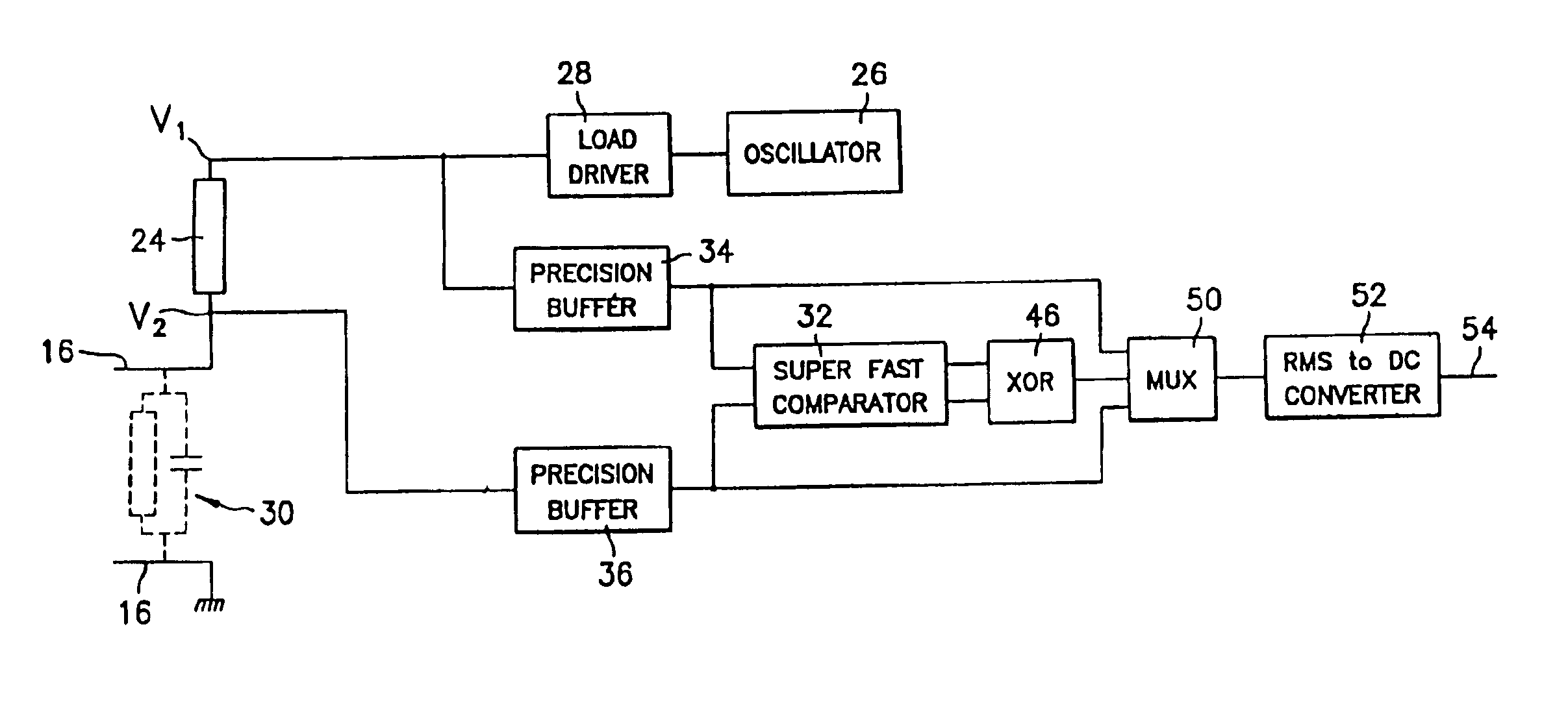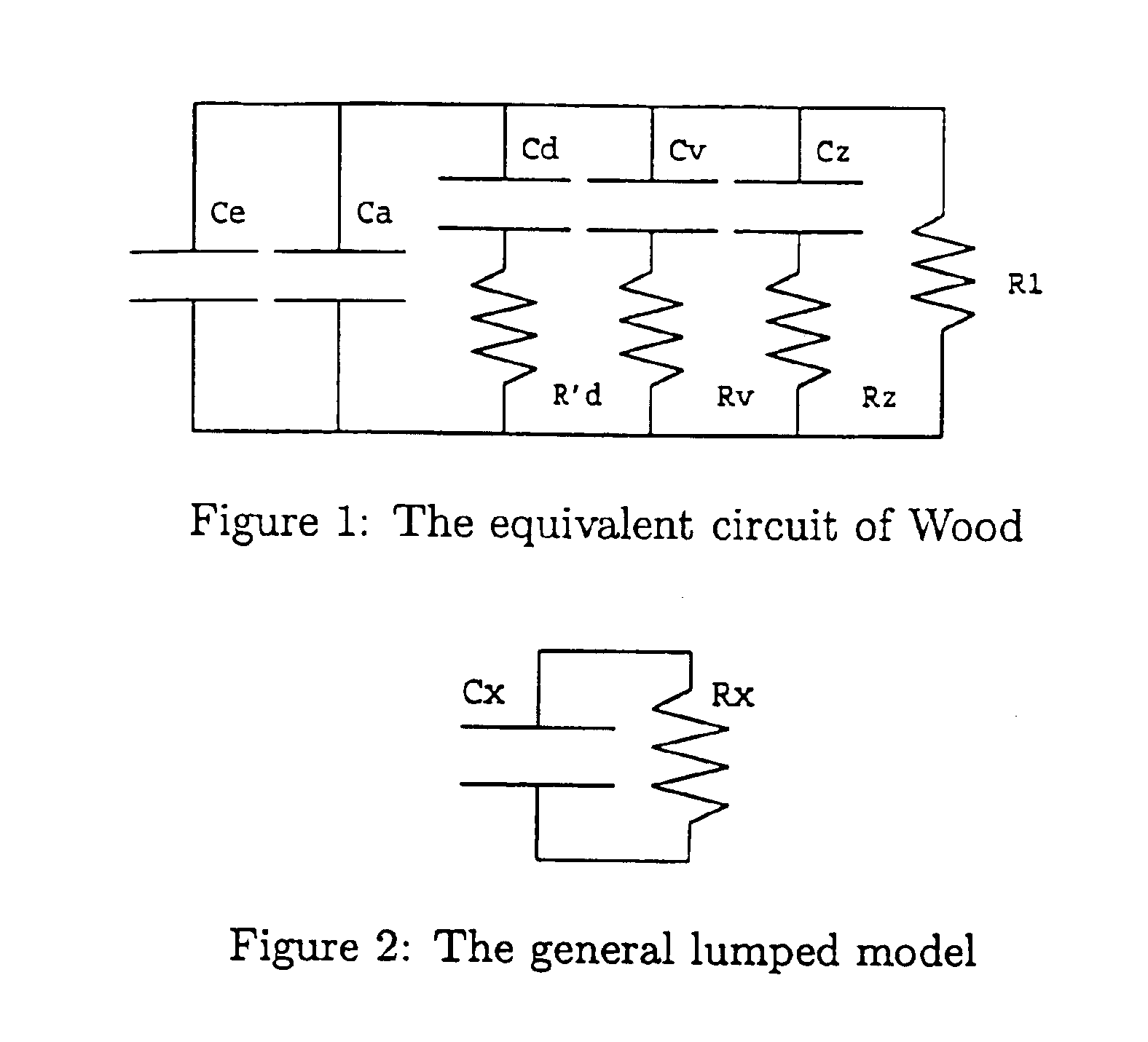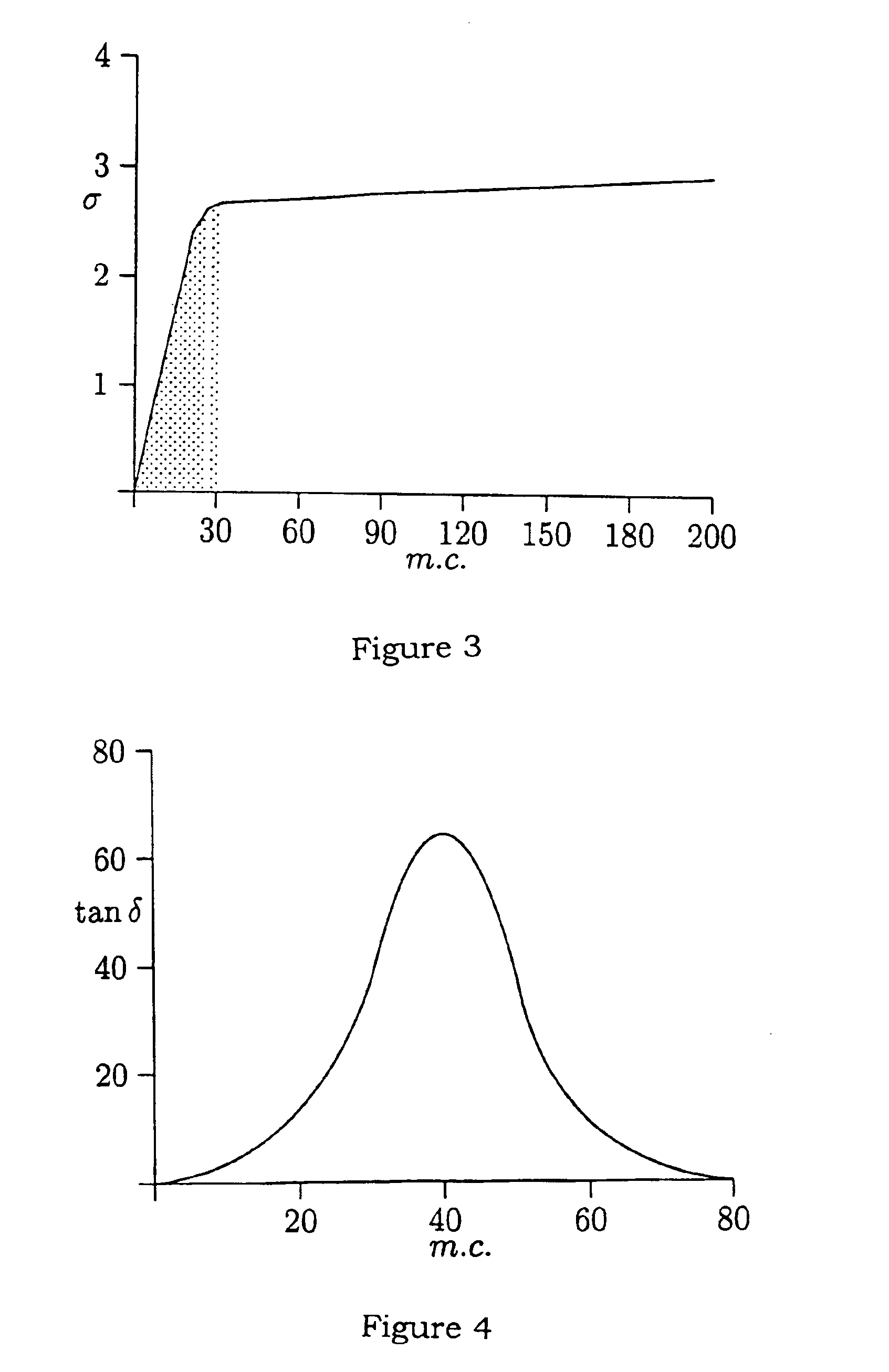Determining the dielectric properties of wood
a dielectric property and wood technology, applied in the direction of resistance/reactance/impedence, instruments, material impedance, etc., can solve the problems of inability to accurately determine the dielectric properties of wood, and the accuracy of traditional methods is not reliable. , to achieve the effect of accurate method, low cost, and low cos
- Summary
- Abstract
- Description
- Claims
- Application Information
AI Technical Summary
Benefits of technology
Problems solved by technology
Method used
Image
Examples
Embodiment Construction
[0103]Referring to FIG. 6 in more detail, reference numeral 10 indicates a wood-drying kiln in which there is a stack of timber 12. The timber 12 is arranged in layers which are spaced from one another by means of spacers. The environment inside the kiln is controlled according to the moisture content of the timber.
[0104]To determine the moisture content of the timber accurately, the kiln is provided with measuring means comprising an electronics module 14 outside but in close proximity to the kiln, a pair of electrodes 16 inside the kiln and coupled to the module 14 by means of electrical connections 18, and a remote data processor 20 which is connected to the electronics module 14 by means of a data link 22. Where there are a number of kilns 10, each with its own electronics module 14, the various electronics modules may all be connected to the same data processor 20.
[0105]The electrodes 16 are in the form of metal plates and are simply inserted into the spaces between layers in t...
PUM
| Property | Measurement | Unit |
|---|---|---|
| relative permittivity | aaaaa | aaaaa |
| relative permittivity | aaaaa | aaaaa |
| relative permittivity | aaaaa | aaaaa |
Abstract
Description
Claims
Application Information
 Login to View More
Login to View More - R&D
- Intellectual Property
- Life Sciences
- Materials
- Tech Scout
- Unparalleled Data Quality
- Higher Quality Content
- 60% Fewer Hallucinations
Browse by: Latest US Patents, China's latest patents, Technical Efficacy Thesaurus, Application Domain, Technology Topic, Popular Technical Reports.
© 2025 PatSnap. All rights reserved.Legal|Privacy policy|Modern Slavery Act Transparency Statement|Sitemap|About US| Contact US: help@patsnap.com



